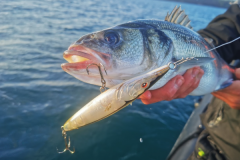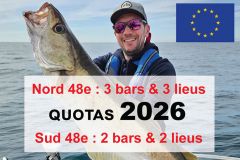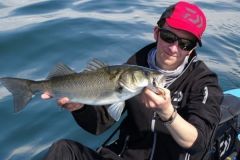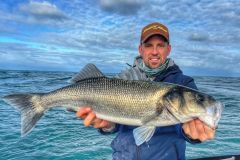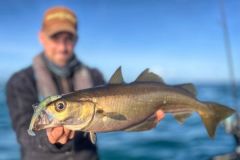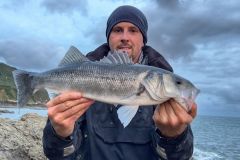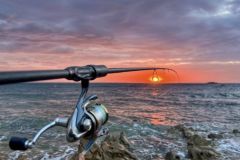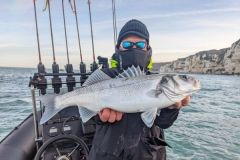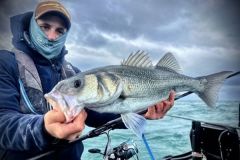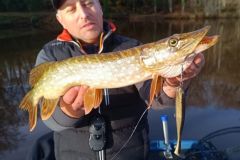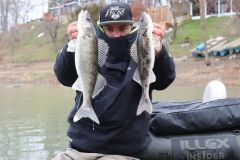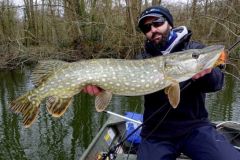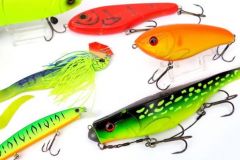Natural colors: the perfect imitation
At the start of the season, sea bass are often attracted by natural colors that mimic their usual prey. Shades such as sardine blue, white, grey or ayu green can be particularly effective, especially in clear waters. These colors help to reproduce the appearance of sand eels, small fish and other prey favored by sea bass after the breeding season.
Soft lures in natural colors are often used to imitate local prey. For example, a white lure can imitate a sand lance, while an ayu green lure can resemble a small forage fish. These colors are ideal for fishing in clear waters where bass can easily make out the details of the lure. Ask yourself about the forage fish present in your area at the start of the season, as this will help you make your choice.
Bright and fluorescent colors: attracting attention
In low-light conditions or in murky waters, opting for bright colors can pay off. Fluorescent yellow, chartreuse or even neon pink are good choices to capture the attention of bass. These bright colors stimulate fish aggression and can trigger attacks even when bass are less active. A great way to get out when the water is still cold.
Fluorescent colors are particularly effective in murky waters or overcast conditions. They allow the lure to stand out and attract the attention of bass. For example, a fluorescent yellow lure can be seen from a distance, encouraging bass to attack out of curiosity or aggression.
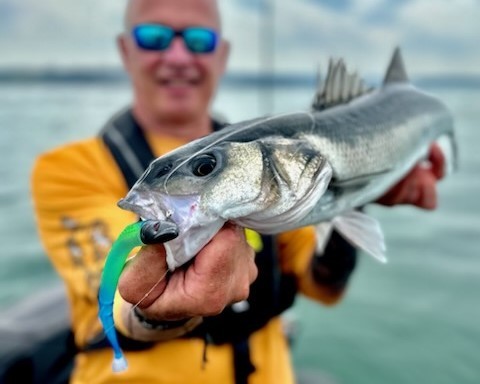
Adapt colors to conditions
Water color and weather conditions play a crucial role in your choice of lure. For example, dark colors may be more visible in murky water or overcast conditions. Conversely, light colors are often more effective in clear water and sunny weather. The adage "light weather, light lure; dark weather, dark lure" remains a rule of thumb for many experienced anglers. In my experience, this saying is quite true.
It's also important to consider the depth at which you're fishing. At depth, colors like blue and green are visible more than 40 meters below the surface, while lighter colors can lose intensity. Adapting the color of your lure to the depth you're fishing can therefore increase your chances of catching a fish.
Imitation of seasonal prey
Early in the season, bass often feed on small prey such as marine worms, crabs and small fish. Using soft lures that imitate these prey, both in shape and color, can increase your chances of catching them. For example, a soft lure imitating a sandeel can be very effective in attracting hungry bass after the spawning season.
Sea bass are opportunistic predators and quickly adapt to the prey available in their environment. By observing the natural prey present in your fishing area, you can choose lures that imitate their appearance and behaviour. For example, if bass feed mainly on small fish, a silver or bluish soft lure may be an excellent choice.
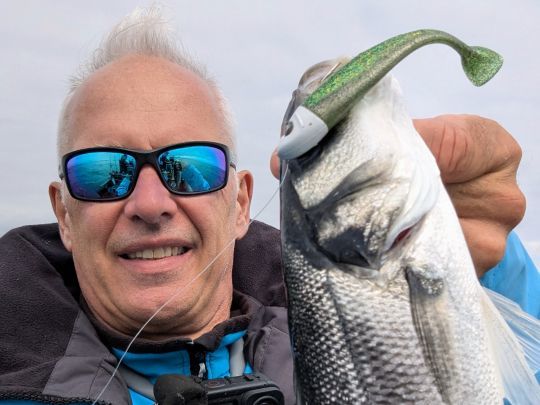
Experimenting for success
There's no magic formula for choosing the perfect color for your soft lure. Experimentation is often the key to success. Don't hesitate to try out different colors and observe fish reactions. Sometimes, an unexpected color can turn out to be the most effective in the specific conditions of your fishing area.
Experimentation can also include variations in lure size and shape. For example, a small soft lure may be more effective early in the season when bass are feeding on small prey. By trying out different combinations of colors, sizes and shapes, you'll increase your chances of finding what works best for you. My friend Romain is the king of lure changes. No hits after 5 or 10 minutes, he immediately tries a different shape, size or color! And it works.
Practical tips for bass fishing
Lure animation : the way you animate your soft lure is just as important as the color. A slow, steady animation can imitate a wounded fish, while a faster one can trigger aggressive reactions. In cold waters, slowness can be an asset!
Choice of materials : use a rod and reel adapted to soft lure fishing. A sensitive rod will allow you to feel bites better and animate your lure more realistically. The importance of this criterion is often overlooked.
Observation of fishing spots : sea bass have specific movement and hunting habits. Observing the fishing spots and times of day when bass are most active can help you choose the right lure and color. Record your observations according to spot, coefficient and time of tide.
Early-season sea bass fishing is an exciting time with many opportunities. By choosing your soft lure colors wisely and adapting your strategy to environmental conditions, you'll increase your chances of making a good catch. Don't forget that fishing is also a question of patience and observation. Have fun on and off the water!

 /
/ 


